Winners of ONE Prize 2013 "Stormproof" competition
By Bustler Editors|
Wednesday, Oct 30, 2013
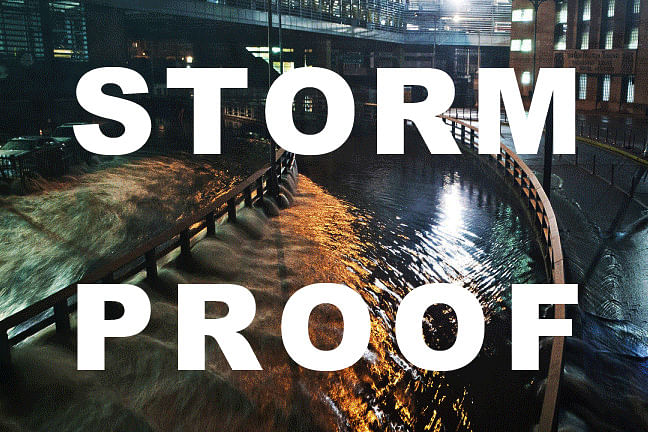
Related
The winners have been revealed for the ONE Prize 2013 international design competition! For this year's "Stormproof" theme, participants had to create smartly designed resilient cities ready to face the challenges of severe climate conditions. The competition, organized by Terreform ONE, drew submissions from 168 teams and 310 team members from more than 15 countries and five continents.
ONE Prize Winner ($5000): DYNAMIC CAPACITIES by Kenya Endo (Tokyo, Japan)
Second Place ($1000):
- BARRIER STATEN ISLAND by Cricket Day (United States)
- PERIPHERAL MULTIPLICITY by Katherine Rodgers (United States)
- KOGAMI by Ben Devereau (Padang, Sumatra)
Check out the winning projects below.
ONE Prize winner: DYNAMIC CAPACITIES by Kenya Endo (Tokyo, Japan)
"Harvesting sediments to create a protective wetland around the coast of the Tone River in Tokyo. The project establishes a variety of interventions according to flooding levels. Apply 'intercept' to areas that could harvest sediments, 'purify' to areas that need cleaner water and 'store', where water can become a part of the urban fabric."
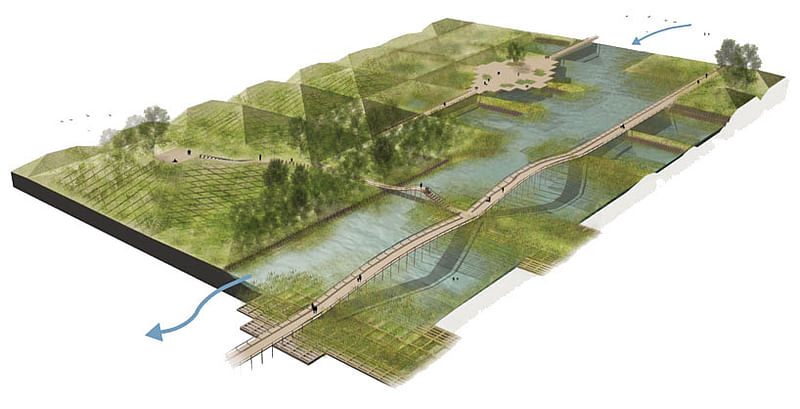
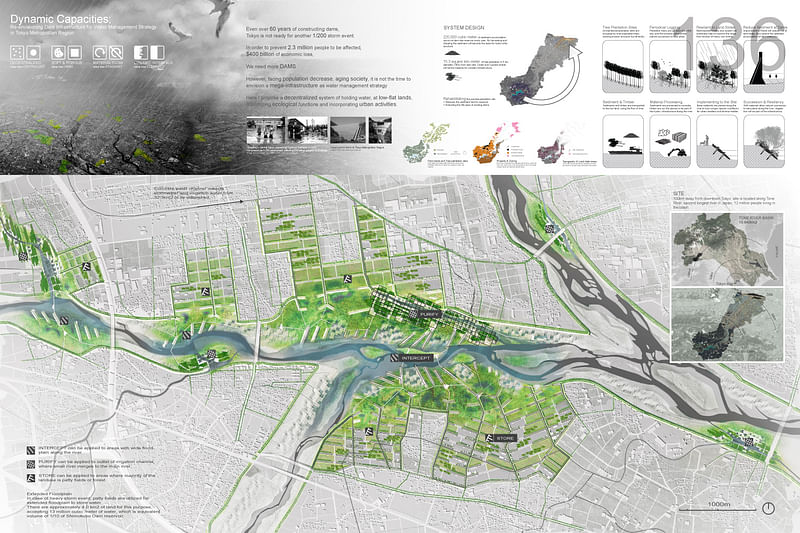

Second Place: BARRIER STATEN ISLAND by Cricket Day (United States)
"Create a 7.5 mile artificial island to avoid surge from coming into Staten Island. The new island will have protective wetlands, salt marshes and facilities for water related activities. A coastal defense made of various trails that end up in knuckle programs resilient to coastal storms."

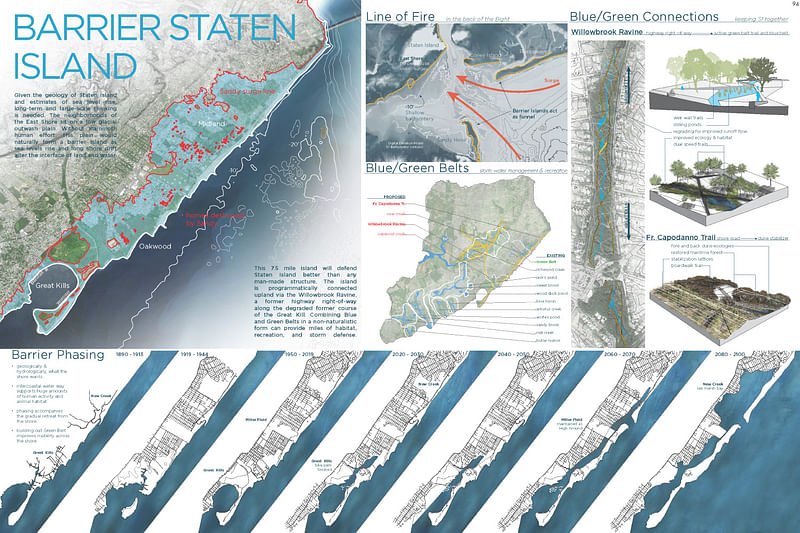

Second place: PERIPHERAL MULTIPLICITY by Katherine Rodgers (United States)
"Creating coastal protection that strengthens the identity of Gateway National Park System, using forts along the coastline, creating a rich shoreline that protects inland developments. With many types of edges, going from the urban front to the water, the coastline is reshaped to withstand storms."


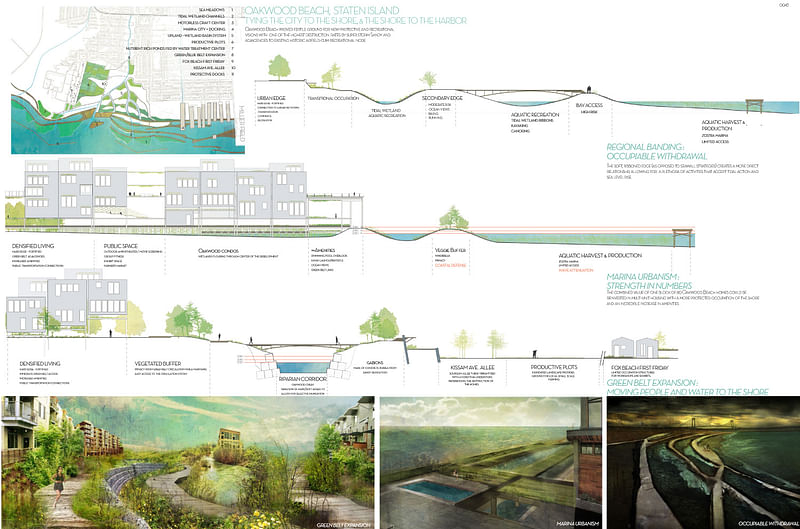
Second place: KOGAMI by Ben Devereau (Padang, Sumatra)
"Construct a warm water coral reef using old shipping containers, to reduce the wave power and redirect the storm surge. Using a layered strategy, going from water development to artificial mangrove woods, and then to an emergency relief center, the project tackles the before, during and after emergency stages for tsunamis."
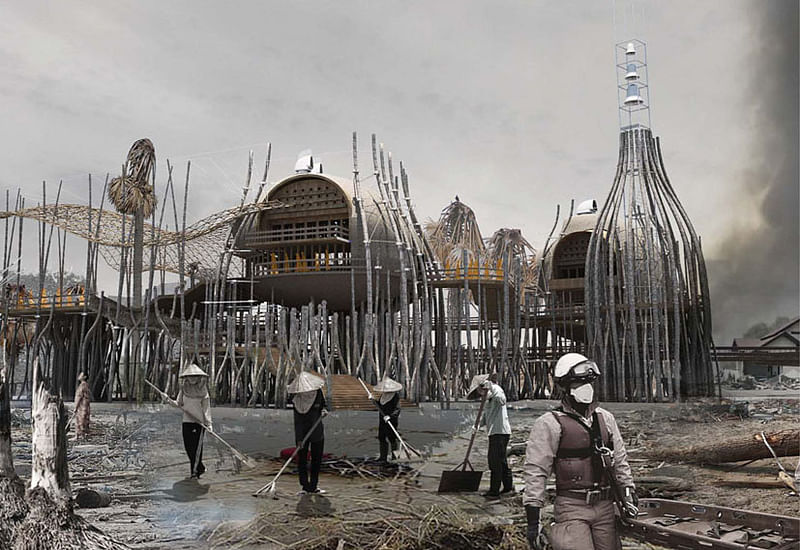


For more details, click here.
Images courtesy of ONE Prize 2013.

Share
0 Comments
Comment as :